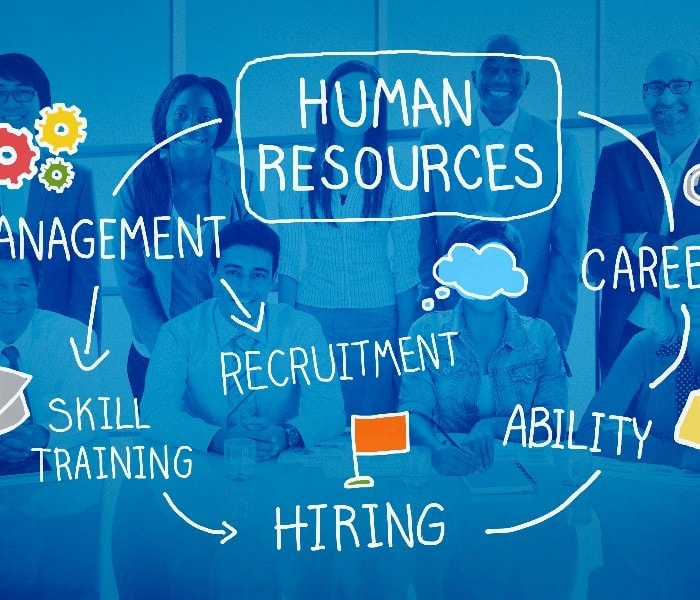
Personal Management: Functions, Objectives, and Distinctions

Personal management involves the management of the human resources within a business entity It encompasses functions such as manpower planning, training and development, recruitment, employee selection, and more The objectives of personal management are to ensure the effective utilization of human resources and to achieve the organization's goals It differs from human resource management in terms of its focus on the individual employee rather than the organization as a whole
Personal management involves managing the human resources of a business entity to ensure optimal productivity. As an organization heavily relies on its workforce, personal management assigns and supervises the activities of employees to promote and encourage their efficiency.
Meaning of personal management
Effective personal management is crucial to the success of any organization. It involves managing the relationships between employees and the company, as well as ensuring that the workforce is satisfied and motivated. A dedicated personal management department can help to create a positive work environment that fosters productivity and growth. By prioritizing the needs of employees, businesses can achieve unprecedented success and growth.
The company's personal management team is responsible for selecting and hiring employees based on the company's needs. They provide essential training to improve the employees' skills and promote growth in their work. Additionally, they ensure that the work environment is suitable and conducive to productivity and strive to maintain a positive relationship between management and employees. This team plays a crucial role in the company's success by effectively planning and organizing the workforce to maximize the use of both human and material resources.
Personal management offers effective incentives to motivate and encourage full co-operation. It stimulates the workings of its workforce to increase competency and potential.
Functions of personal management
The role of human resource management can be viewed as advisory in nature as it suggests various initiatives for the betterment of its employees. These initiatives are further classified into different categories such as -
1) Manpower planning
Effective personal management involves the crucial task of manpower planning, which involves strategically placing the right number of qualified individuals in the appropriate positions and at the optimal time to achieve desired outcomes.
There are numerous steps involved in manpower planning, and it includes
It is necessary to analyze the current inventory and note the type and number of departments, along with the staff in the units.
Utilizing indexation, past projections, statistical analysis, expert surveys, and mathematical models via computers, the following step involves creating future forecasts. These forecasts will be used to develop employment programs that incorporate placement plans, selection processes, and recruitment strategies. Additionally, the current inventory will be compared to the future forecasts to ensure effective hiring practices.
The last step includes designing training programs to improve knowledge and skills of the workers.
The importance of manpower planning includes
Effective manpower planning can lead to a boost in productivity by reducing waste in terms of money, time, energy, and effort. Additionally, it fosters clear communication and efficient supervision, which improves the relationship between employees.
Manpower planning gives due emphasis on motivational programs and necessary incentives to increase the utilization and participation of its workforce.
The advantages of manpower planning include
Offering stability to a business entity by managing its manpower effectively
Identifying surpluses as well as shortages so that it becomes easy to take action at the right time
Helps to implement training programs to enhance the available talent
Identifying the issue of overstaffing and subsequently reducing the cost of labour
Utilizing human resources for diversification of business entity.
2) Training development | Personal Management
Training has become an integral part of most of the organizations as it helps to enhance the workings of an employee to its maximum ability.
Employees, both new and existing, are provided with training opportunities that come in two forms: on-job and off-job training. On-job training is a cost-effective method that involves coaching and job rotation during everyday work. On the other hand, off-job training involves sending employees to separate workshops, seminars, and conferences, which may be more expensive but provides long-term benefits to the company.
The advantages of offering a training program to the employees are
Improving self-confidence of an employee – Training acts as a guiding force to an employee and helps to improve his morale as well as self-confidence.
.
Improved efficiency – With proper training, employees become more efficient in their work, completing tasks in a timely manner and with greater accuracy. This leads to increased productivity and profitability for the company.
Better decision-making – Through training, employees gain a better understanding of their roles and responsibilities, as well as the company’s goals and values. This empowers them to make informed decisions that benefit both themselves and the organization.
Enhanced job satisfaction – When employees receive training and are able to perform their jobs more effectively, they are more likely to feel satisfied with their work. This can lead to lower turnover rates and improved morale within the workplace.
Overall, investing in employee training and development is crucial for the success of any organization. It not only improves the skills and knowledge of the workforce, but also leads to increased productivity, efficiency, and job satisfaction.
Through proper training, the likelihood of accidents can be reduced as employees become more skilled in carrying out their duties. Additionally, training equips employees with new skills and knowledge, making them eligible for handling more responsibilities and increasing their chances of receiving a raise or promotion.
3) Recruitment | Personal Management
Another function of personal management is dealing in the recruitment process.
It is further subdivided into two headings that include
1. Internal Recruitment
Internal recruitment processes can utilize various sources to find suitable candidates for the job. Promotions through internal job postings, transfers, and re-employment of former employees are some of the sources that can be used to fill vacancies within the company.
2. External Recruitment
As the name suggests the source of external recruitment are obviously outside the organization and includes:
Employment at the factory level
it is possible via posting the vacancies at bulletin boards outside the gate of a factory
1. Advertisement
Newspapers, business magazines, and selected social sites are one of the prominent sources of the external recruitment process.
Employment agencies are dedicated organizations that aim to provide job opportunities based on an individual's qualifications or a business's requirements. They serve as a crucial source of external recruitment and are responsible for supplying skilled manpower to various industries.
3. Employment exchange
Government-run employment exchanges help in the recruitment process at government concerns.
4. Campus recruitment
Numerous educational facilities have set up a recruitment cell that offers the chance of recruitment for fresh graduates.
5. Recommendations
Recommendations via known or highly placed sources also help in the external recruitment process in a company.
4) Employee Selection | Personal Management
Selecting the right candidate for the job is an important function of personal management.
The process takes place in an orderly manner that includes the following steps
1. Preliminary interview
Preliminary interviews, also known as screening interviews, serve the purpose of narrowing down the pool of applicants based on the eligibility criteria established by the company. These interviews are typically less formal than the final interviews and are focused on identifying the most qualified candidates for further consideration.
The skills, knowledge competency, and qualifications are examined during this interview so that the candidates who fit the profile can move on to the next stage.
2. Application blanks
3. Written tests
Applicants who have successfully passed the preliminary interviews are required to provide information on their qualifications, age, experience, and reason for leaving their previous job. This information is essential for the hiring process and will be carefully reviewed by the hiring team.
The employee selection procedure includes written tests like a personality test, intelligence test, and aptitude test to assess the potential of a candidate.
4. Employment interview
The interview is a crucial step in the hiring process where the candidate has the opportunity to showcase their skills and experience, while the employer can assess their suitability for the role.
5. Medical examination
Medical tests have become a part of the employee selection process and are conducted everywhere to ensure whether the candidate is fit for the job or not.
6. Appointment letter
A formal appointment letter is a commitment from the company to hire the applicant and is given when he has successfully passed all the hurdles in his path.
Objectives of personal management
The objectives of personal management are as follows-
Achieve optimal utilization of human resources by improving working conditions
Establish a close working relationship amongst every employee in an organization
Offering opportunities for growth and advancement of employees through further education and training
Increasing the levels of commitment, loyalty, and involvement amongst the employees
Defining the accountability and responsibility of each job
.
Providing both group and individual needs with a focus on mental well-being is crucial. This includes ensuring job security for employees, which allows them to work without unnecessary stress or pressure. Additionally, offering social and economic security through monetary compensation for situations such as illness, death, and old age can provide peace of mind for both the individual and the group.
Minimizing friction between employees and also between management and employees
How Is Personal Management different than Human Resource management?
Personal management has a limited scope if compared with the responsibilities of the human resource department.
Personal management focuses mainly on maintaining employee welfare and ensuring that the working conditions are suitable for them. On the other hand, human resources management includes various activities that aim to improve the productivity and efficiency of the organization and its workforce, while also taking care of employee needs.
Rewritten:
Managing employees in a business entity has traditionally been approached through personal management, while human resource management is a more modern approach to managing the workforce in a company.
Communication in the personal management process is often conveyed indirectly, while in a human resource management system, it is more direct. In the latter, employees are viewed as a valuable resource that plays a crucial role in achieving the desired output.
The company places a strong emphasis on labor relations, employee welfare, and personal administration. This includes a focus on maintaining, motivating, developing, and acquiring human resources. In terms of personal management, job design is based on the division of labor. However, in the human resource management process, job design is conducted with a team-based approach.
Ensuring employee satisfaction is a crucial aspect of effective human resource management. While personal management may have a narrower focus on goal achievement, HRM recognizes the importance of investing in employee development and training. Through offering ample opportunities for skill-building, HRM cultivates a more knowledgeable and capable workforce.
Top management officials make decisions for the company based on the established rules and regulations. These decisions are made collectively by the management team, taking into account factors such as employee participation and the competitive environment. The focus of personal management is on employee satisfaction and productivity, while human resource management emphasizes employee participation, productivity, and effectiveness.
Human resource management is responsible for overseeing all managers within an organization, from the top down. In contrast, personal management is often viewed as a routine and less significant auxiliary function. As a strategic management function, human resource management plays a critical role in shaping an organization's success.
Employees are often viewed as mere tools that can easily be replaced in a traditional management system, rather than valuable assets that can bring countless benefits to a company. Such a narrow outlook only focuses on the administrative aspects of managing people, whereas a more comprehensive approach aims to cultivate a dynamic and thriving corporate culture that values and invests in its employees as a whole.














